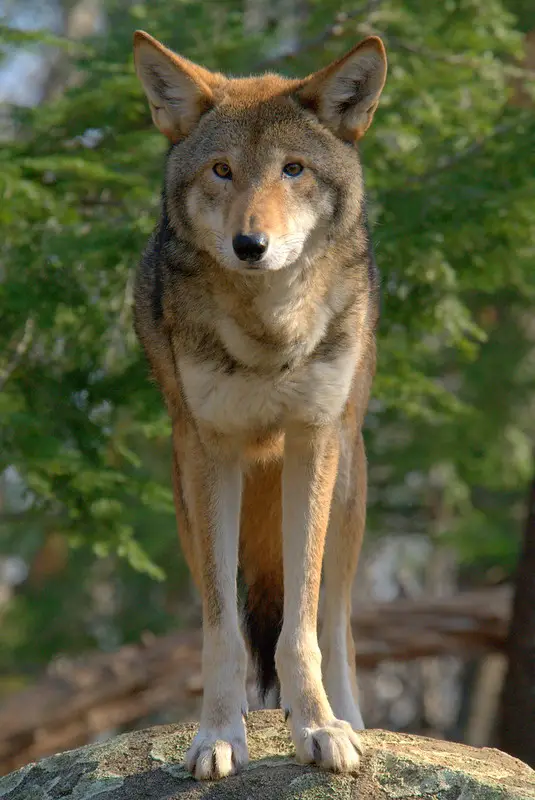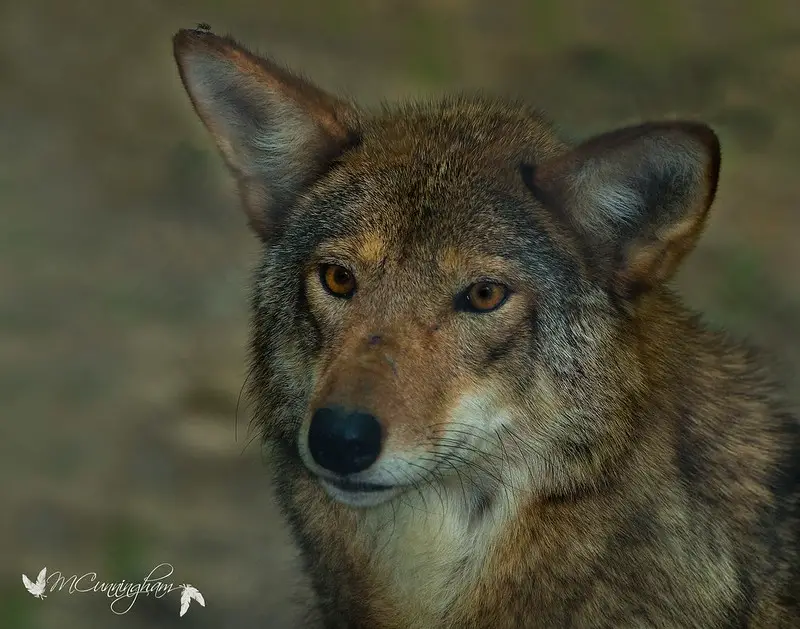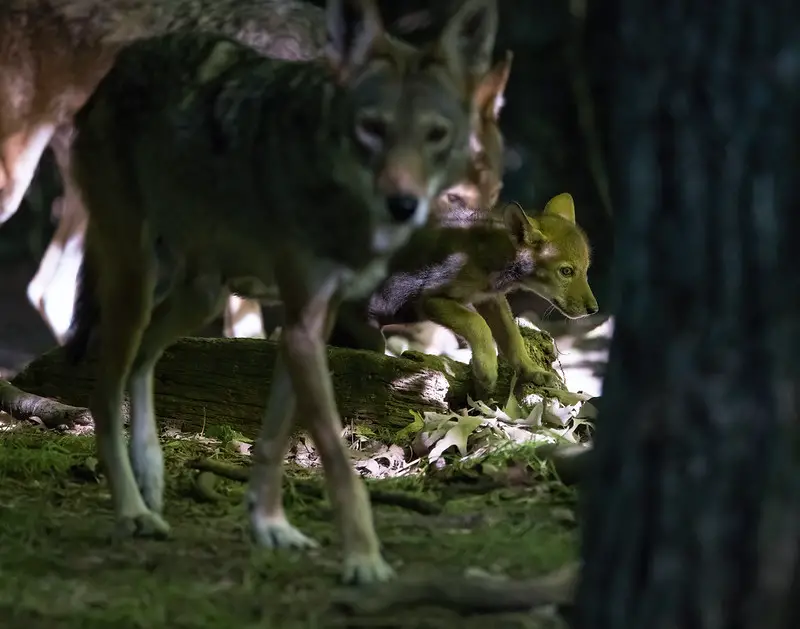The red wolf (Canis Rufus) is the most endangered in the world. Once common throughout the South Central and Eastern U.S., today, they are only found in eastern North Carolina’s Albemarle Peninsula.
The red wolf was designated a threatened species under the Endangered Species Preservation Act in 1967. Indeed, decades of predator control programs and habitat loss had, at that time, reduced their numbers to near-extinction levels.
Today, 45 captive breeding facilities house nearly 250 red wolves, but only about 15-30 wild red wolves roam their native habitat. Unfortunately, the red wolf is often mistaken for a coyote and killed.
Accidentally killing a red wolf carries no penalty if the carcass you report to the U.S. Fish and Wildlife Service. However, this article contains information to help you prevent having to make that call.

Red Wolf habitat.
It is fair to say that the only natural hazard to a red wolf today is a coyote hunter or someone who thinks they are killing destructive coyotes.
Indeed, killing a red wolf that threatens human safety or is a nuisance to livestock remains legal. But it isn’t the outcome anyone desires.
While the red wolf has a distinctive reddish tint to its fur, this isn’t always noticeable. And coyote hunters who wish to avoid accidentally taking a red wolf cannot assume that being outside eastern North Carolina’s Albemarle Peninsula means they can shoot a coyote without double-checking their target.
The red wolf’s habitat recently included coastal prairies and marshes in southeastern Texas and southwestern Louisiana. Today, these same areas in the southeastern United States may contain undocumented populations of the red wolf.

Red wolf description.
The red wolf has a wide head with a broader muzzle than a coyote. Unlike gray wolves, the red wolf’s ears are tall and pointed (like a coyote’s), and has large feet and long slender legs.
A red wolf is about two feet high (measured at the shoulder) and averages about four feet in length.
Red wolves are slightly larger than eastern coyotes, weighing as much as 75 pounds. Their brown and buff colored pelts are only similar to most coyotes, except for the reddish tint to the head, ears, and legs.
When using a thermal or infrared scope, positively identifying a red wolf from a coyote is impossible at longer ranges.

Red wolf family structure.
Red wolves live in family packs, typically with an unrelated breeding pair and their pups from previous litters. The average pack size is 5 to 8 animals.
Like other wolves (except the timber wolf), the red wolf waits as long as 22 months to disperse a pup forcibly.
Red wolves are monogamous and monoesters. Thye mate once a year in February and begin excavating or renovating two dens hidden in hollow trees, sand knolls, or abandoned burrows of other animals.
Red wolf pups are born between April and May. Unfortunately, approximately 50% of all first-year red wolf pups die due to malnutrition, disease, and predation–standard statistics for all wolves, even Arctic wolves.
Like all wolves, the red wolf has a territory and a home range it defends against other wolves and even domesticated dogs.
Red wolf diet.
The red wolf consumes up to five pounds of food daily, primarily white-tailed deer, nutria, and raccoons.
Like coyotes and foxes, the red wolf will opportunistically take smaller rodents and mammals.


